
Computers in car = Carputers
Warning : this might give you some
ideas...



It all started around the year 1999, because I were really tired of that poor music choice and functionality provided by a 10disc CD-Changer..
Due to the nasty winter-conditions (northern Norway) the box had to be waterproof and airtight (to prevent condensation at quick temperature changes)- so it could "survive" in the trunk of a car.
 This is the facia and display-controller.
This is the facia and display-controller.
MP3 - playing music/books/comedy
VIDEO - Playing movies & episodes
GPSmaps - Displaying different terrain/town
maps, position, heading, speed,
altitude, logging routes.
GPSNavigation - Route calculation & voice
assitance, can search by address.
PHUN - Games, and an 3D Aqarium (a must-have in any car)
AT&T Natural Voices -
Text-To-Speech-Engine - provides nice, female voice.
-everything is controlled by one numeric keypad.
and my USB HID device.
-also, the screen is touch sensitive.
Everything below is old news, here is latest news :)
Automatic opening of Citroen Xantia facia :
Pentium 200MMX on a strange Compaq motherboard with integrated ATI Rage Pro graphic card and ES1886 audio.
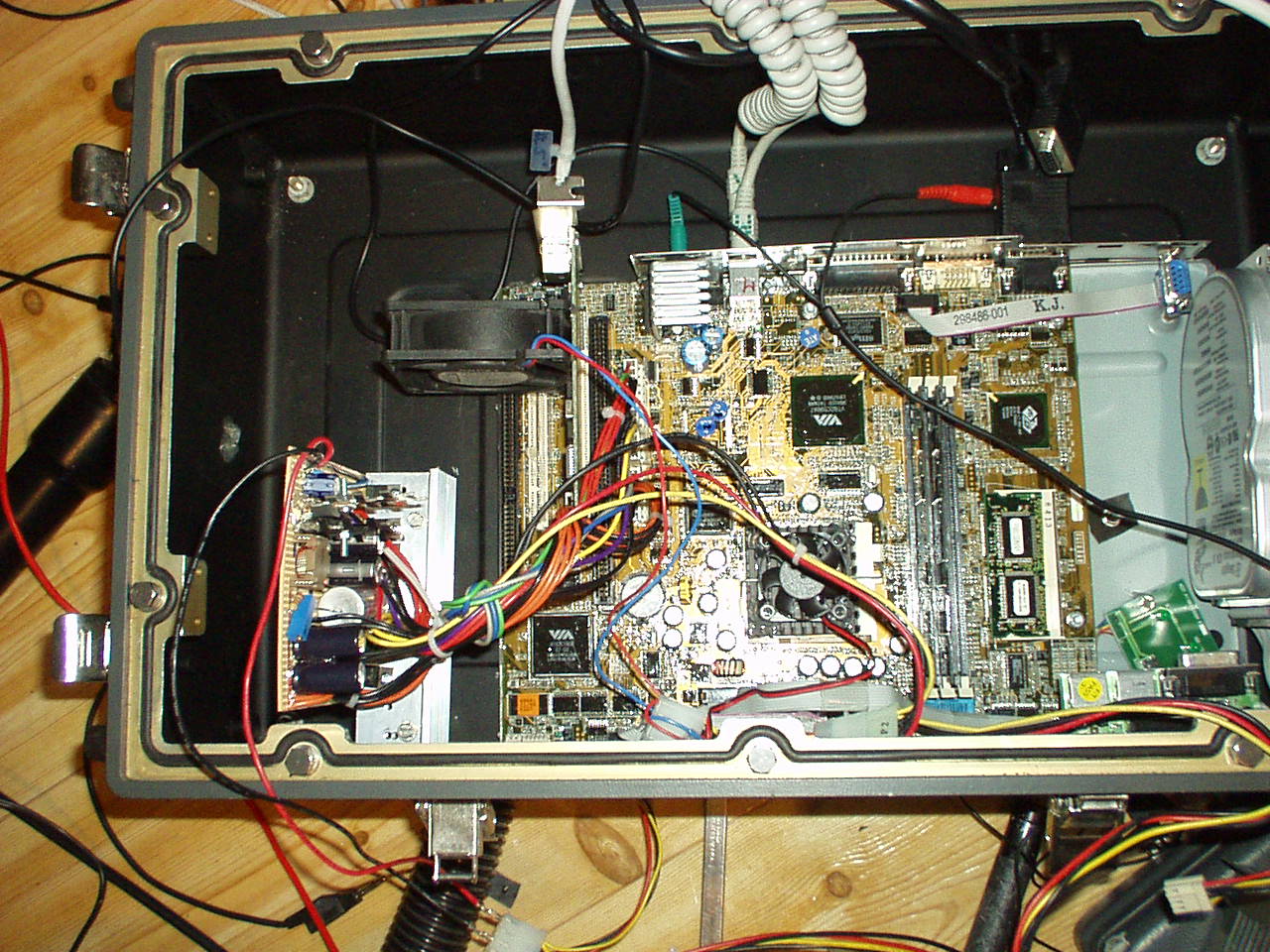
The AT power supply was a home made power supply , using both linear
and switching technology.
here is a close up on the power supply - a fan were needed and a huge
heatsink for the linear part.

...the power requirements would soon grow, because I decided to bring in more processor power - needed for certain movie formats...
I upgraded to a P3 motherboard and a VIA 933Mhz C3 processor. C3 is a low power CPU, it doesn't even need a fan when equipped with a big heatsink.
I also made some cables that goes from all needed internal connectors (keyboard/mouse/USB/Audio/Video/Serial) to a waterproof military connector in the wall of the case (military waterproof aluminum case with pressure equalizing valve.
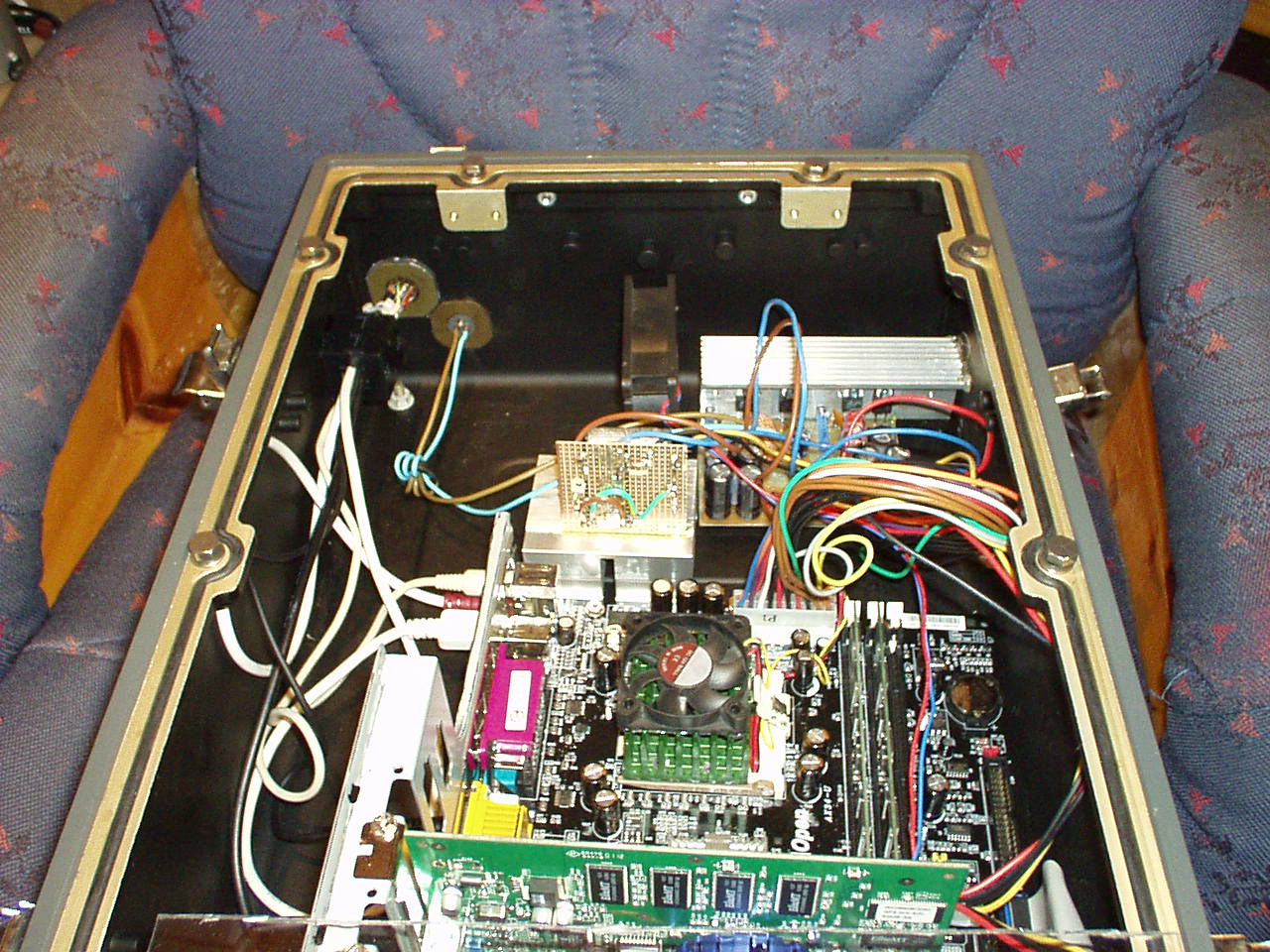
These are the connectors , the lower one is used for power , the upper right is signals. The case is equipped with shock absorbing rubber-stands in each corner:
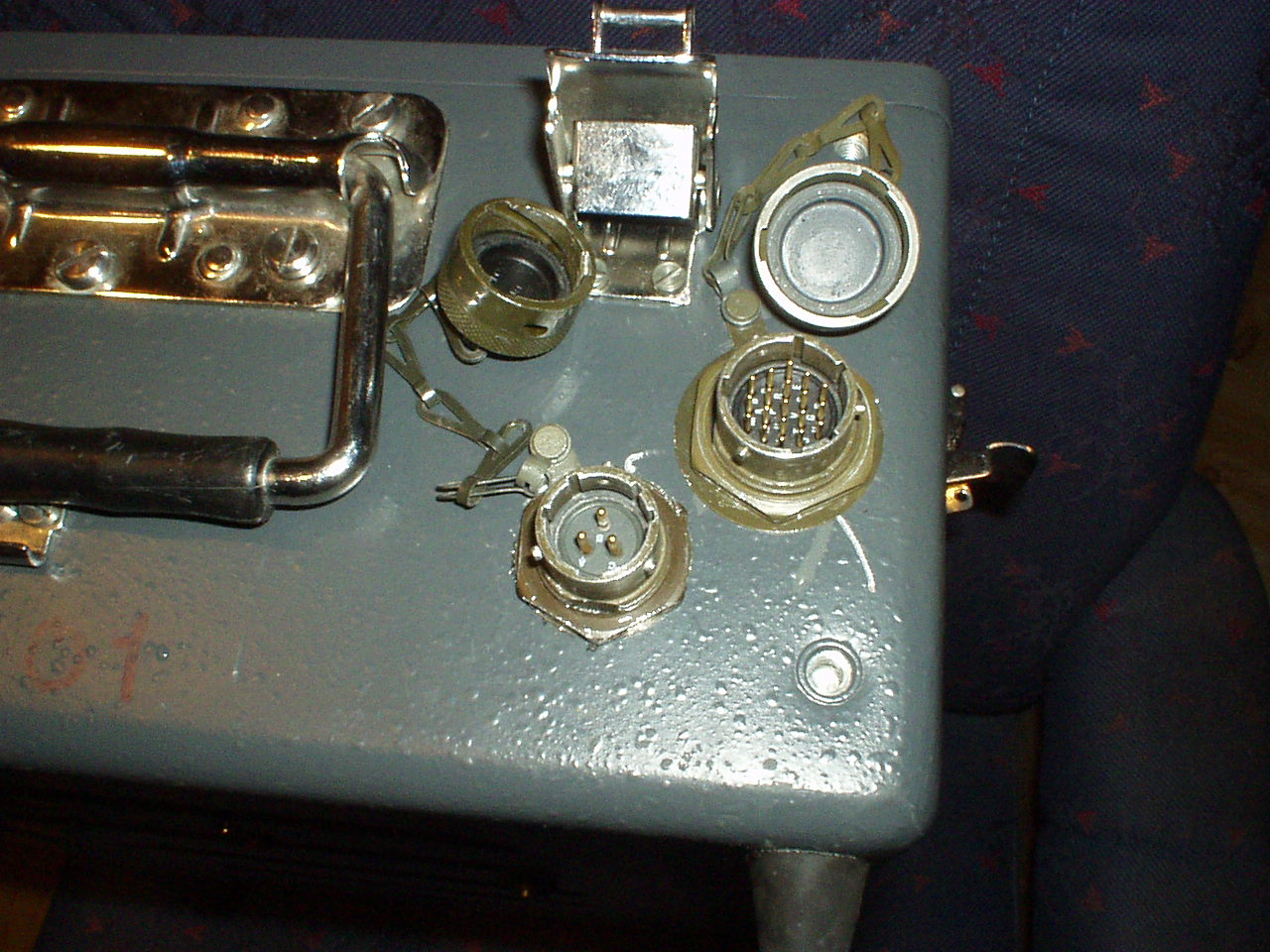
This is a picture of the latest (second) ATX power supply I built , +5 and +3.3Volt is on the upper right PCB , -12 and -5volt is right below that PCB, , the lower "standing" PCB is the +12Volt switcher.

Overview , everything assembled , ready to be closed , just some aluminum silica gel containers have to be mounted inside... (they will suck up any humidity trapped in the box)

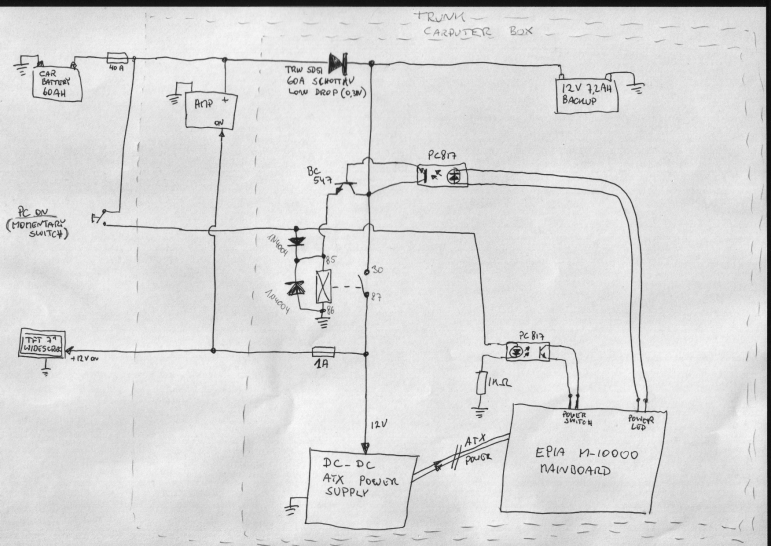

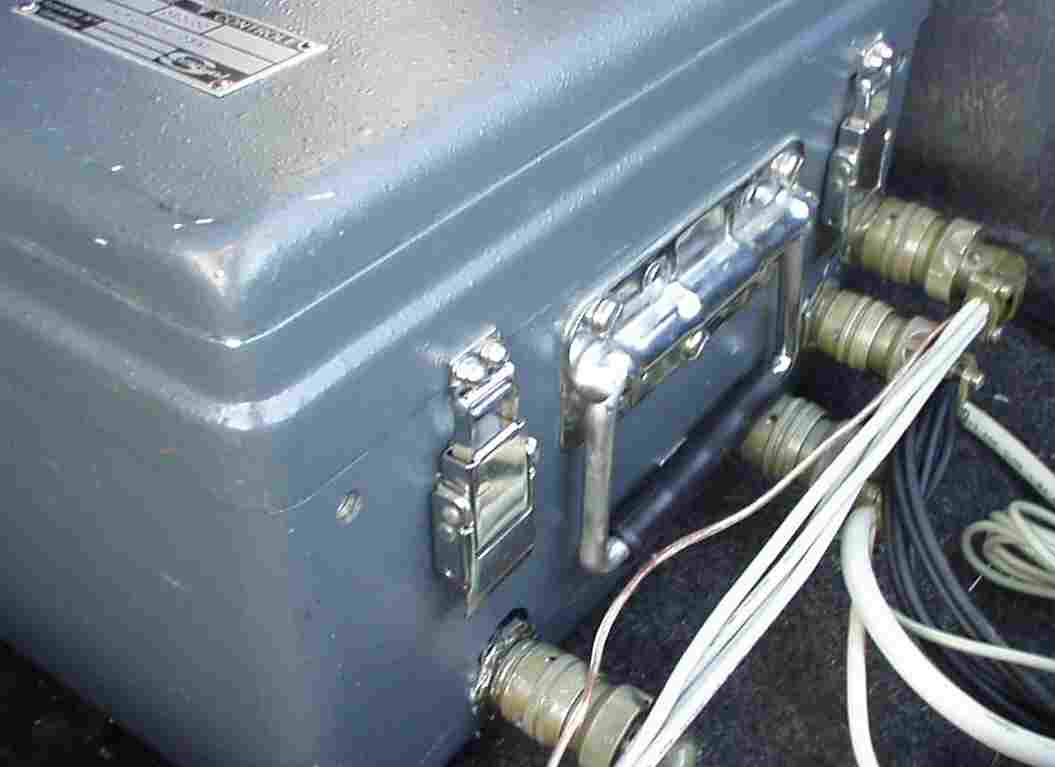
Everything is programmed/scripted/customized by me , and Girder does a great part of the job.
I have made advanced OSD pop-up menus, selections and a lot of stuff computer can say (speech synthesis) back to me to assist easy navigation among ~15 playlists,GPS ,movies, audio books and comedy, visualization plugins and other commands like "shuffle" , hibernate , resume/reboot and lots of other stuff.
The keypad
that (using intuitive OSD menus) makes all features available at my
fingertips. :)
The USB device I built , provides fast access to volume and
pause.
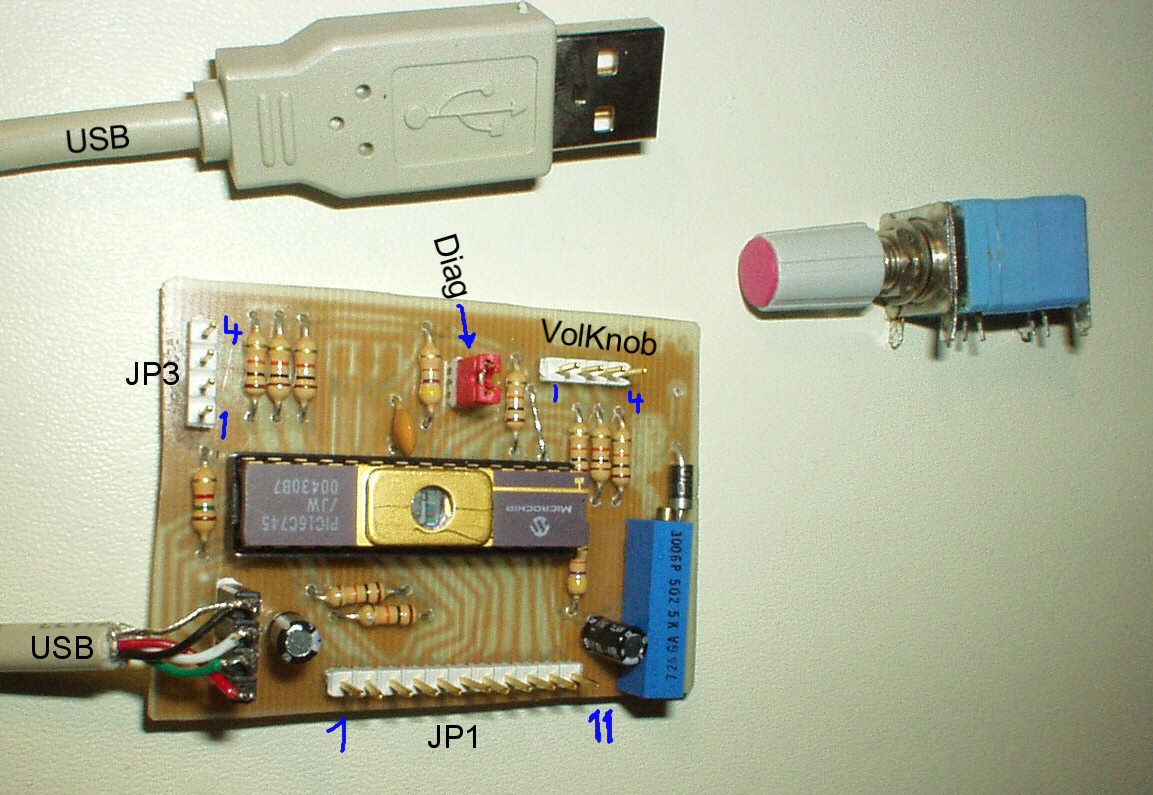

The USB controller, Volume knob (also used for menu-navigation) , and 5
buttons (one behind)
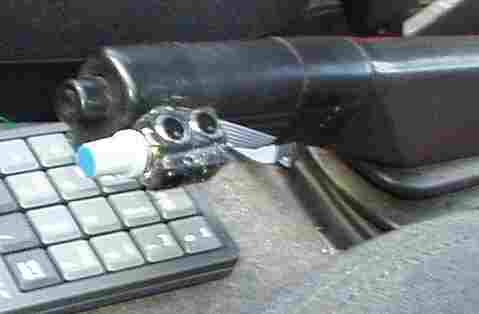
Xenarc 7" widescreen
touch-sensitive VGA monitor.
Taking pictures of the screen proved difficult, but here is a few...
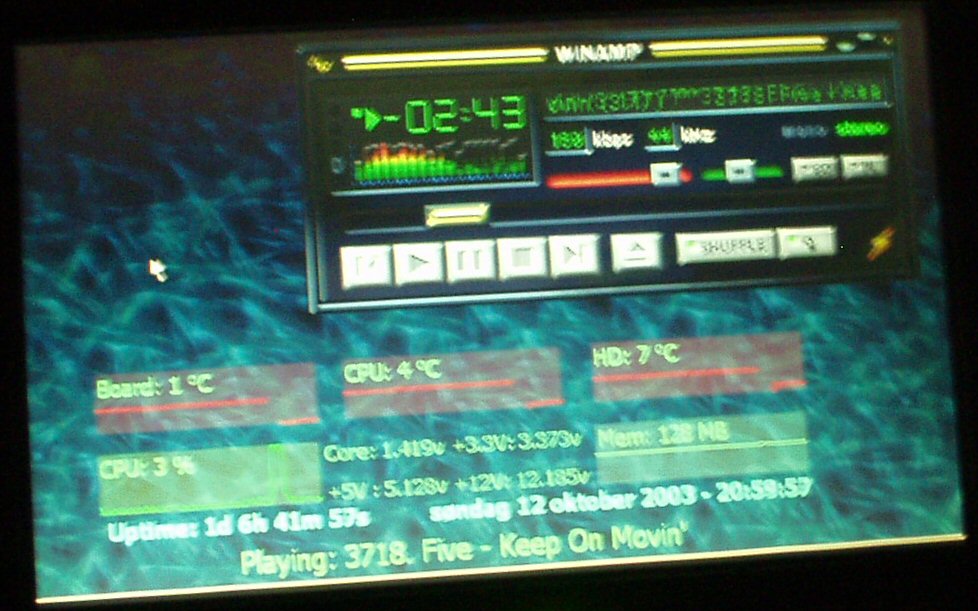
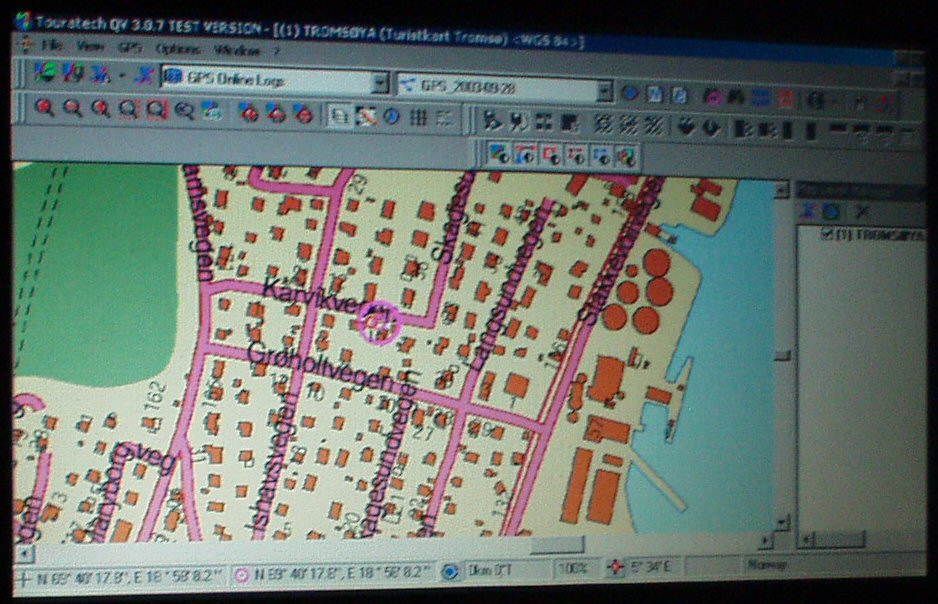
Power-Supply schematics:
(many people asks for it) When I built it I were preparing for my summer vacation '03 (car trip to Sweden) and I were in a hurry to finish this project in time.
I did not draw any schematics at all - I used the LT1074 's referance design, modified it to fit my needs, hand-made the necessary coils using some ferrite cores and put it together (that's also why the power supply consists of two boards.) - then I made a lot of minor adjustments & modifications to ripple/lower noise and make the swithcers work synchronously to reduce interference.
After this, the power supply proved to work just fine, and it is still working just fine.
So that's why I do not have any schematics, and it's not easy to disassemble/backtrace it now.